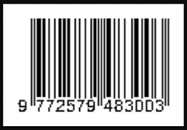PEMBELAJARAN SAINS PADA PROGRAM PENDIDIKAN ANAK USIA DINI
DOI:
https://doi.org/10.32550/teknodik.v0i0.103Abstract
Substansi pembelajaran sains pada program Pendidikan Anak Usia Dini (PAUD) diorientasikan pada proses pengenalan dan proses penguasaan tentang sains sesuai dengan tingkat usianya, sehingga kedua proses tersebut diharapkan menjadi titik awal penguasaan sains untuk level selanjutnya. Oleh karena itu, wilayah garapan pembelajaran sains bagi anak usia dini meliputi dua dimensi besar, pertama dilihat dari isi bahan kajian dan kedua dilihat dari bidang pengembangan atau kemampuan yang akan dicapai. Langkah-langkah pembelajaran sains diawali dengan: 1) perumusan tujuan, 2) penentuan material, 3) setting lingkungan, 4) pengembangan kegiatan, 5) pemberian penghargaan, dan 6) tindakan pengayaan. Penerapan langkah-langkah tersebut, secara umum dibagi menjadi tiga pendekatan, yaitu: 1) pendekatan yang bersifat situasional, 2) pendekatan yang bersifat terpisah atau tersendiri, dan 3) pendekatan yang bersifat terintegrasi. Evaluasi akhir kegiatan pembelajaran sains pada PAUD dilakukan untuk menelusuri tingkat keberhasilan pembelajaran sains, sehingga diketahui upaya upaya selanjutnya, baik tindakan perbaikan, pengayaan, maupun pengembangan lainnya.
Kata kunci: anak usia dini, pendidikan, dan pembelajaran sains.
Abstract:
Substance of science learning in early childhood education programs is directed at the introduction and mastery of science process in accordance with his age level, so that both processes are expected to be the starting point of mastery of science at the next level. Therefore, the claim of science learning for early childhood children includes two major dimensions, first seen from the content and study materials and second visits of the field of development or the ability to be achieved. The scope of the content of study materials includes materials related discipline or field of study. While the scope of the aspects of the development or ability, consists of three dimensions of product mastery of science, the mastery of science processes and mastery of science attitudes. The procedure in learning science begins with:(1) formulation of objectives, (2) determination of the material, (3) the environmental setting,(4) development activities, (5) award, and (6) enrichment action. Application of the procedure, generally divided into three approaches, namely: 1) a situational approach, 2) an approach that is separate or distinct, and 3) the approaches that are merged or integrated with other disciplines. Final evaluation of science learning activities in early childhood education is conducted in a systematic and sustainable way for the purpose of tracking and determining the level of success of science learning, so the next efforts will be recognized whether they are improvement, correction, enrichment or other development efforts.
Keywords: Early Childhood, Education, Science Learning.
Downloads
Published
How to Cite
Issue
Section
Citation Check
License
Please download and complete the Form, Copyright Transfer, and Ethics Statement Form. The following is provided at the time of submitting the text (Upload Additional Files):










